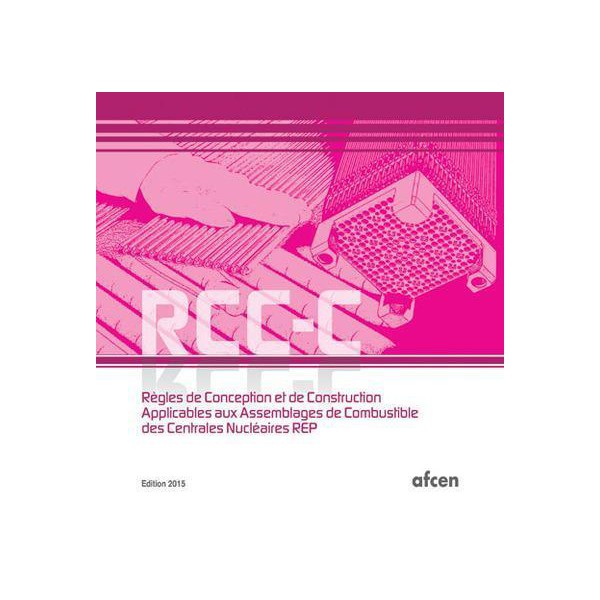RCC-C 2015
Reference: AFC17
Design and construction rules for fuel assemblies of PWR nuclear power plants


Purpose and scope
The RCC-C code contains all the requirements for the design, fabrication and inspection of nuclear fuel assemblies and the different types of core components (rod cluster control assemblies, burnable poison rod assemblies, primary and secondary source assemblies and thimble plug assemblies).
The design, fabrication and inspection rules defined in RCC-C leverage the results of the research and development work pioneered in France, Europe and worldwide, and which have been successfully used by industry to design and build nuclear fuel assemblies and incorporate the resulting feedback.
The code's scope covers:
- Generalities : definitions, standards, management system and treatment of non-conformities
- Product design aspect for safety justification
- Fabrication aspect :
- requirements about materials used,
- qualification requirements for assemblies,
- qualification requirements for inspection and fabrication processes,
- control methods,
- certification of controllers.
- Situations out of the boiler

The new version RCC-C 2015 operates major structure changes for a better user understanding. Furthermore, the technical content has been enhanced on both design and fabrication aspects.
For more details about RCC-C: About AFCEN / Our codes
-
RCC-C 2015 - ENDesign and construction rules for fuel assemblies of PWR nuclear power plants

Take part in updating the codes
If you would like to modify a code, you can send your proposal to the relevant code subcommittee: download and complete the application form, then send the form to the subcommittee email address.
If you would like to understand the interpretation of a paragraph of the code: download the application form, enter your question and send the form to the email address of the relevant subcommittee.
If you want to benefit the nuclear industry from your feedback as a code user, share your expertise with AFCEN: download and complete the application form, then send it to the email address of the relevant subcommittee.




